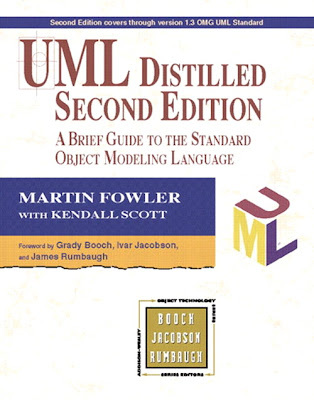.jpg)
UML Distilled Second Edition A Brief Guide to the Standard Object Modeling Language
Foreword
Preface
Structure of the Book
Changes for the Second Edition
Acknowledgments for the First Edition
About the Authors
1. Introduction
What Is the UML?
How We Got Here
Notations and Meta-Models
Why Do Analysis and Design?
Looking for More Information
2. An Outline Development Process
Overview of the Process
Inception
Elaboration
Planning the Construction Phase
Construction
Transition
When to Use Iterative Development
Where to Find Out More
3. Use Cases
Use Case Diagrams
Business and System Use Cases
When to Use Use Cases
Where to Find Out More
4. Class Diagrams: The Essentials
Perspectives
Associations
Attributes
Operations
Generalization
Constraint Rules
When to Use Class Diagrams
Where to Find Out More
5. Interaction Diagrams
Sequence Diagrams
Collaboration Diagrams
Comparing Sequence and Collaboration Diagrams
When to Use Interaction Diagrams
6. Class Diagrams: Advanced Concepts
Stereotypes
Object Diagram
Class Scope Operations and Attributes
Multiple and Dynamic Classification
Aggregation and Composition
Derived Associations and Attributes
Interfaces and Abstract Classes
Reference Objects and Value Objects
Collections for Multivalued Association Ends
Frozen
Classification and Generalization
Qualified Associations
Association Class
Parameterized Class
Visibility
7. Packages and Collaborations
Packages
Collaborations
When to Use Package Diagrams and Collaborations
Where to Find Out More
8. State Diagrams
Concurrent State Diagrams
When to Use State Diagrams
Where to Find Out More
9. Activity Diagrams
Decomposing an Activity
Dynamic Concurrency
Swimlanes
When to Use Activity Diagrams
Where to Find Out More
10. Physical Diagrams
Deployment Diagrams
Component Diagrams
Combining Component and Deployment Diagrams
When to Use Physical Diagrams
11. UML and Programming
Patient Observation: Domain Model
Patient Observation: Specification Model
Moving to Code
A. Techniques and Their Uses
B. Changes between UML Versions
Revisions to the UML
Scheduled Future Revisions
Changes in UML Distilled
Changes from UML 1.0 to 1.1
Changes from UML 1.2 (and 1.1) to 1.3 (and 1.4)
Bibliography
Download
Another Software Engineering Books
No comments:
Post a Comment